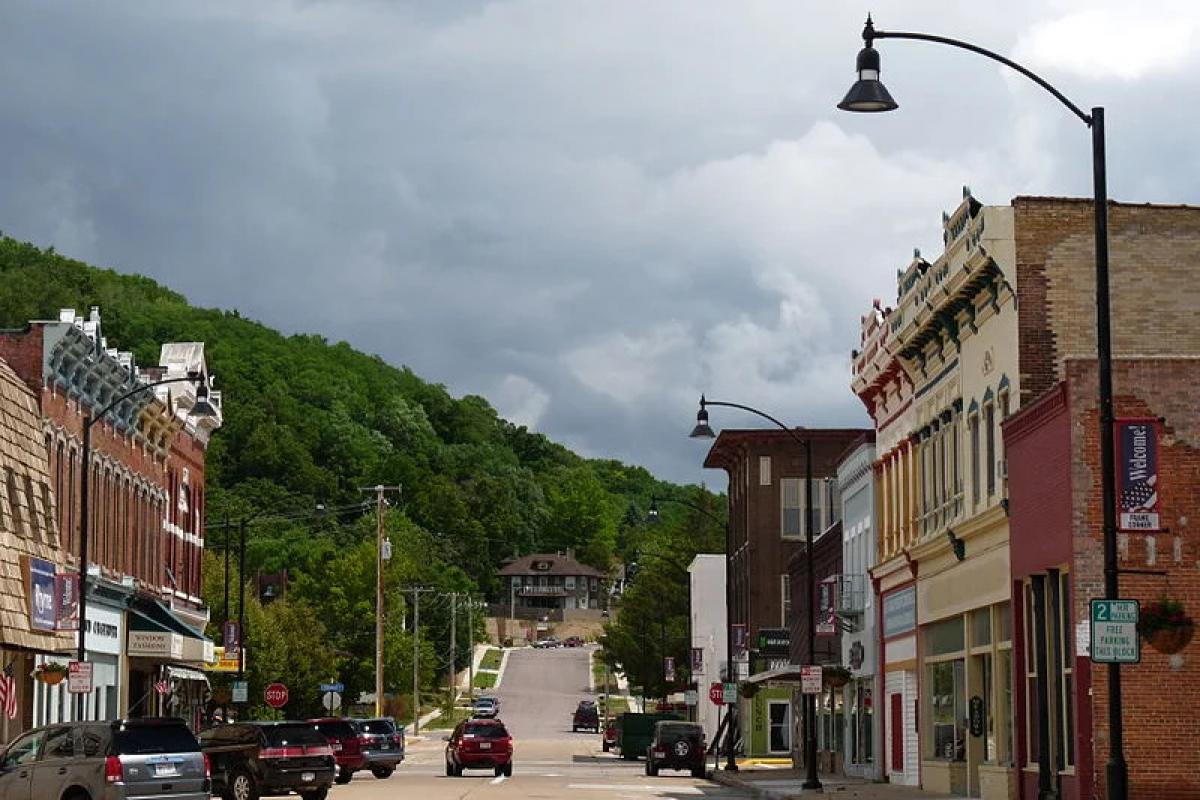Richland Center History

Richland Center was founded in 1851 by Ira Sherwin Hazeltine, a native of Andover, Vermont. Hazeltine was drawn to the site because of its abundant water power, fertile prairies, and its proximity to the geographical center of Richland County. Haseltine offered to donate land to the county if Richland Center was voted the county seat. In 1852 the Wisconsin Legislature formally declared Richland Center as the seat of justice for Richland County. The present Richland County courthouse was built at Richland Center in 1889.
In 1876, a narrow gauge railroad branch opened to connect Richland Center with the Chicago, Milwaukee & St. Paul Railroad at Lone Rock, Wisconsin, providing an outlet for the town’s commerce. The line was originally constructed with maple rails, but it was rebuilt as a standard gauge iron railway in 1880. On October 8, 1882, the town’s railway depot was destroyed when an early morning fire ignited two kegs of gunpowder stored inside, causing an explosion that tore the roof from the building and scorched several nearby rail cars. Another passenger depot built in 1909 still stands in Richland Center, and it today serves as a visitor center for the community.
Richland Center became an important location for the women’s suffrage movement in Wisconsin after Laura Briggs James, Julia Bowen, and other residents founded the Richland Center Woman’s Club in early 1882. The club quickly became the largest suffrage group in the state and was influential in organizing the movement throughout Wisconsin. Susan B. Anthony visited Richland Center in 1886. Later, Laura James’ daughter, Ada James, became influential in the movement, helping to found the Political Equality League in 1909 and advocating for women’s rights, pacifism, birth control, and prohibition.
Frank Lloyd Wright was born at Richland Center in 1867. The A. D. German Warehouse, completed in 1921, is the only building designed by Wright in the city and is an early example of his Mayan Revival style.
